| |||||
| Decades: | |||||
|---|---|---|---|---|---|
| See also: | |||||
The following lists events that happened during 1875 in Chile .
| |||||
| Decades: | |||||
|---|---|---|---|---|---|
| See also: | |||||
The following lists events that happened during 1875 in Chile .

Chile, officially the Republic of Chile, is a country in western South America. It is the southernmost country in the world and the closest to Antarctica, stretching along a narrow strip of land between the Andes Mountains and the Pacific Ocean. Chile had a population of 17.5 million as of the latest census in 2017 and has a territorial area of 756,102 square kilometers (291,933 sq mi), sharing borders with Peru to the north, Bolivia to the northeast, Argentina to the east, and the Drake Passage to the south. The country also controls several Pacific islands, including Juan Fernández, Isla Salas y Gómez, Desventuradas, and Easter Island, and claims about 1,250,000 square kilometers (480,000 sq mi) of Antarctica as the Chilean Antarctic Territory. The capital and largest city of Chile is Santiago, and the national language is Spanish.
1875 (MDCCCLXXV) was a common year starting on Friday of the Gregorian calendar and a common year starting on Wednesday of the Julian calendar, the 1875th year of the Common Era (CE) and Anno Domini (AD) designations, the 875th year of the 2nd millennium, the 75th year of the 19th century, and the 6th year of the 1870s decade. As of the start of 1875, the Gregorian calendar was 12 days ahead of the Julian calendar, which remained in localized use until 1923.

1814 (MDCCCXIV) was a common year starting on Saturday of the Gregorian calendar and a common year starting on Thursday of the Julian calendar, the 1814th year of the Common Era (CE) and Anno Domini (AD) designations, the 814th year of the 2nd millennium, the 14th year of the 19th century, and the 5th year of the 1810s decade. As of the start of 1814, the Gregorian calendar was 12 days ahead of the Julian calendar, which remained in localized use until 1923.
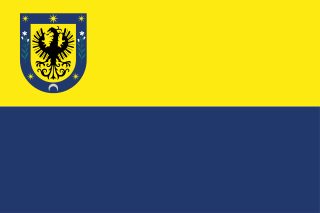
Concepción is a city and commune in south-central Chile, and the geographical and demographic core of the Greater Concepción metropolitan area, one of the three major conurbations in the country. It has a significant impact on domestic trade being part of the most heavily industrialized region in the country. It is the seat of the Concepción Province and the capital of the Bío Bío Region. It sits about 500 km south of the nation's capital, Santiago.
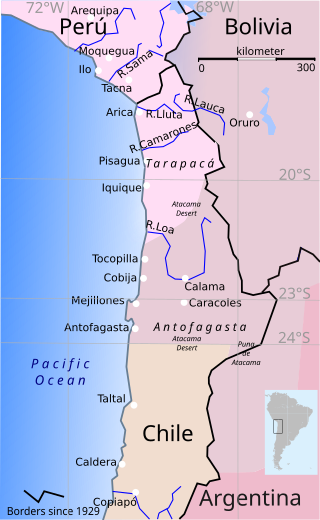
The War of the Pacific, also known as the Nitrate War and by multiple other names, was a war between Chile and a Bolivian–Peruvian alliance from 1879 to 1884. Fought over Chilean claims on coastal Bolivian territory in the Atacama Desert, the war ended with victory for Chile, which gained a significant amount of resource-rich territory from Peru and Bolivia.
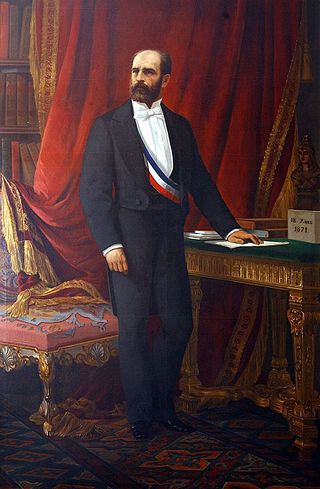
Federico Marcos del Rosario Errázuriz Zañartu was a Chilean political figure. He served as the president of Chile between 1871 and 1876.
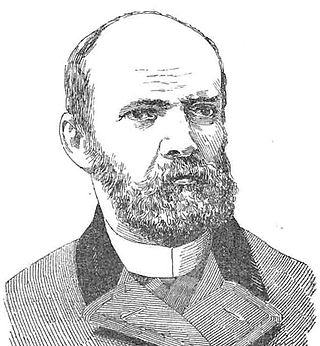
Diego Jacinto Agustín Barros Arana was a Chilean professor, legislator, minister and diplomat. He is considered the most important Chilean historian of the 19th century. His main work General History of Chile is a 15-volume work that spanned over 300 years of the nation's history.

The royal governor of Chile ruled over the Spanish colonial administrative district called the Captaincy General of Chile, and as a result the royal governor also held the title of a captain general. There were 66 such governors or captains during the Spanish conquest and the later periods of Spanish-centered colonialism. Since the first Spanish–Mapuche parliaments in the 17th century it became an almost mandatory tradition for each governor to arrange a parliament with the Mapuches.

Nevado de Longaví is a volcano in the Andes of central Chile. The 3,242 m (10,636 ft) high volcano lies in the Linares Province, which is part of the Maule Region. It features a summit crater and several parasitic vents. The volcano is constructed principally from lava flows. Two collapses of the edifice have carved collapse scars into the volcano, one on the eastern slope known as Lomas Limpias and another on the southwestern slope known as Los Bueye. The volcano features a glacier and the Achibueno and Blanco rivers originate on the mountain.

The Chile national under-17 football team is the representative of Chile within FIFA and participates in international football competitions such as FIFA U-17 World Cup and South American Under-17 Football Championship. It is part of the Federación de Fútbol de Chile and it participated in the 1993, 1997, 2015 and 2017 editions of the FIFA U-17 World Cup tournament. As the host nation, Chile qualified automatically for the 2015 edition.
French Chileans are Chilean citizens of full or partial French ancestry. Between 1840 and 1940, 20,000 to 25,000 French people immigrated to Chile. The country received the fourth largest number of French immigrants to South America after Argentina (239,000), Brazil (150,341) and Uruguay.

The nations of Chile and Mexico established diplomatic relations in 1831, however, relations were severed in 1974 in the aftermath of the 1973 Chilean coup d'état. Diplomatic relations were re-established in 1990 and have continued unabated since.
Llay-Llay is a town and commune in the San Felipe de Aconcagua Province of central Chile's Valparaíso Region.
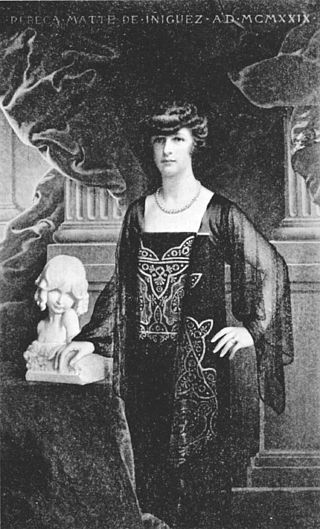
Rebeca Matte Bello was a Chilean sculptor. Her sculptures are in the collection of the Chilean National Museum of Fine Arts, including her sculpture Icarus and Daedalus, which resides outside the museum.
The following lists events that happened during 1918 in Chile.
The following lists events that happened during 1969 in Chile.
Science fiction in Chile began in the late 19th century with the publication of the books El espejo del mundo in 1875 by the Englishman Benjamin Tallman, about the modernization of Valparaíso and Santiago, and in 1877 of Desde Jupiter by Francisco Miralles, which recounted a trip to the planet and back.
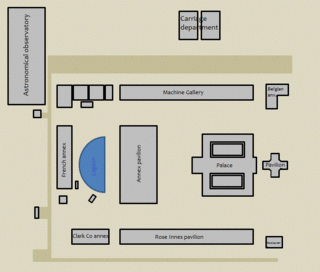
The Chilean International Exhibition was a world's fair held in Quinta Normal Park, Santiago, between 16 September 1875 and 16 January 1876 to show Chilean people recent technological and scientific advances.

José Rafael Larraín Moxó was a Chilean politician, farmer, businessman and banker. Elected senator for Santiago for four terms from 1855 to 1882, he was also president of the Senate of Chile from 1864 to 1867. A co-founder of the National Agricultural Society, he was its director and president from 1845 to 1847, and from 1875 to 1893. In 1859, he co-founded a credit institution, the Banco de Chile, and became president of the Bank of Valparaiso in 1874 and later the National Bank. A member of the Conservative Party, he was its president from 1884 to 1885.